Trafalgar Square just pulses with life, honestly, no matter when you show up. Sometimes, golden sunlight spills over those famous stone lions guarding Nelson’s Column, and the city whirls around you—artists, locals, travelers, all mixing together.
Standing among these huge lions, with the iconic National Gallery behind me and, weirdly, hardly any pigeons overhead, I got swept up in the history and art and all the wild ideas this urban landscape seems to spark.
As I wandered, I saw how the square’s energy shifts as the day moves along. Its legendary features—like Landseer’s bronze lions and the grand gallery façade—just keep drawing people in.
The flocks of pigeons that used to cover every inch of pavement have mostly vanished. That change gives the square this fresh, open vibe where you can soak in both the quiet and the chaos.
My day here taught me to look up, notice the small details, and let the scene nudge my thoughts in new directions. Whether I paused in the shade of the monuments or just watched people weaving through the sunlight, Trafalgar Square seemed to offer something to anyone curious enough to step in.
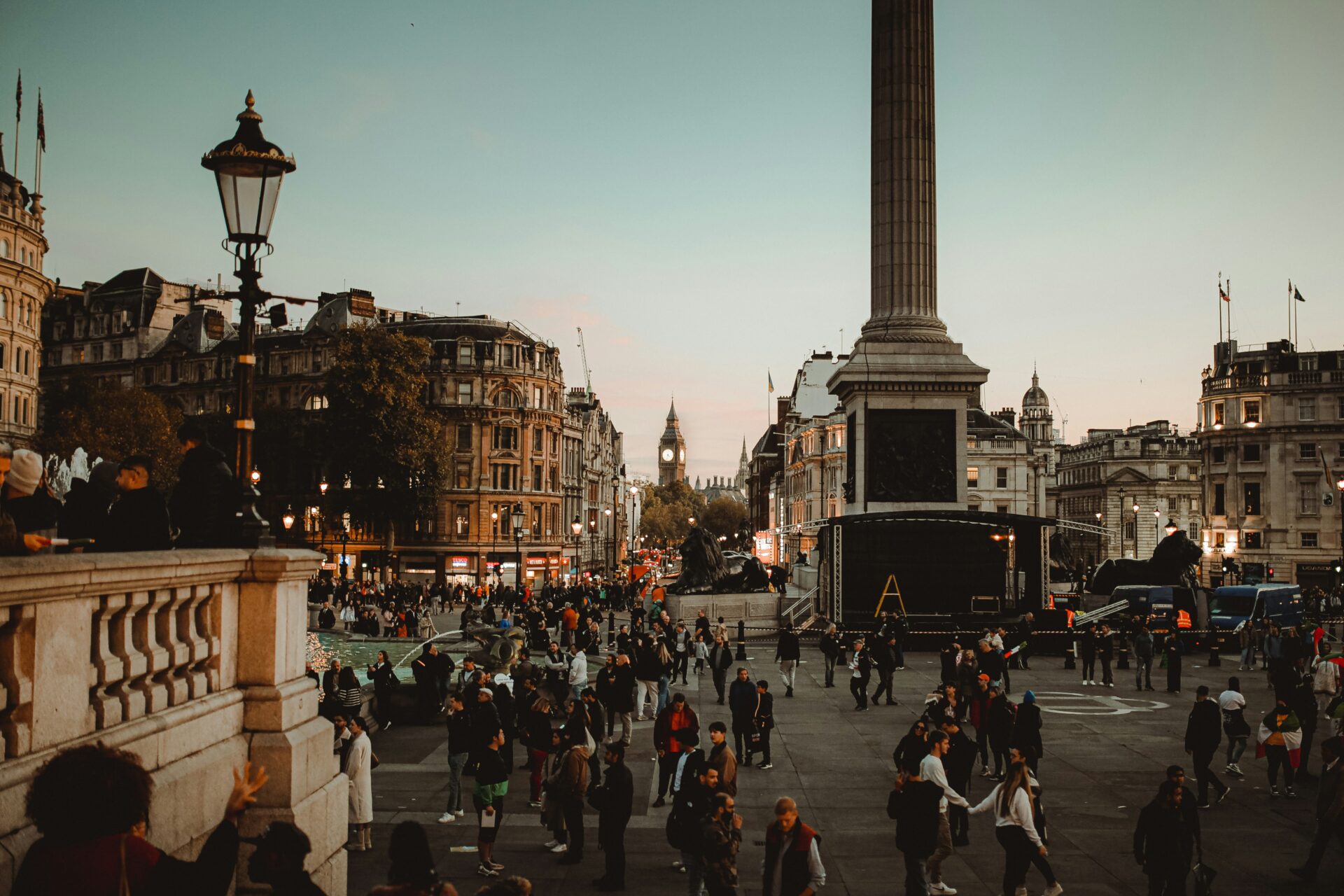
First Impressions of Trafalgar Square
Walking into Trafalgar Square in the morning, I felt it hit all the senses—brisk energy, a jumble of people at work and play, and that wild sense of standing right in the middle of history.
Everywhere I turned, the city’s structure clashed with moments of personal freedom. It’s hard not to notice.
Approaching the Heart of London
As I walked toward the square, the scenery changed fast—from tight city streets to this wide-open plaza. Nelson’s Column loomed ahead, and those famous bronze lions looked stately and silent, anchoring everything around them.
It’s hard not to feel both excited and calm as the square opens up in front of you. It really does feel like arriving at London’s beating heart.
Laughter and bits of conversation bounced off the stones, mixing with the distant rumble of buses and bikes. Old buildings lined the edges, reminding me of the past, while street artists added splashes of creativity and color to the scene.
Even with fewer pigeons, the square still had this sense of unpredictability, as if anything could happen at any moment.

The Buzz and Flow of City Life
Every minute, I caught a new snapshot: tourists posing for photos, city workers hustling by with coffee, kids spinning near the fountains.
People moved around Nelson’s Column, the grand National Gallery, and the open space, creating a visible rhythm—a blend of freedom and routine.
The square belonged to everyone for just a moment. Time felt both stretched and compressed, caught between stopping to admire sculptures and rushing off to the next thing.
Trafalgar Square vibrated with emotion—excitement, curiosity, maybe even a little nostalgia.
The energy was honestly contagious. Whether you came for art, work, or just to wander, you could always find a spot on the steps to rest and take in the view.

Majestic Nelson’s Column and the Lions’ Gaze
Trafalgar Square isn’t just crowds and fountains. Every time I visit, Nelson’s Column and those iconic bronze lions pull me in—each one with its own story and quirks that make history feel alive in the middle of London.
History and Legends of Nelson’s Column
Nelson’s Column rises 52 meters above the square and honors Admiral Horatio Nelson and his victory at the Battle of Trafalgar. Builders finished it in the 1840s, and they topped it with a statue of Nelson himself.
I can’t help but imagine what it must be like to look out over London from up there, thinking about the stories of heroism and loss that shaped British naval history.
People love to share legends about the column. Some say the granite at the base came from Nelson’s own ship, the HMS Victory, though records point to Scotland as the real source.
There’s also this old myth about a hidden razor engraved with initials somewhere on the base. I haven’t found it, but those odd marks and engravings always make me look a little closer, searching for some lost bit of the past.
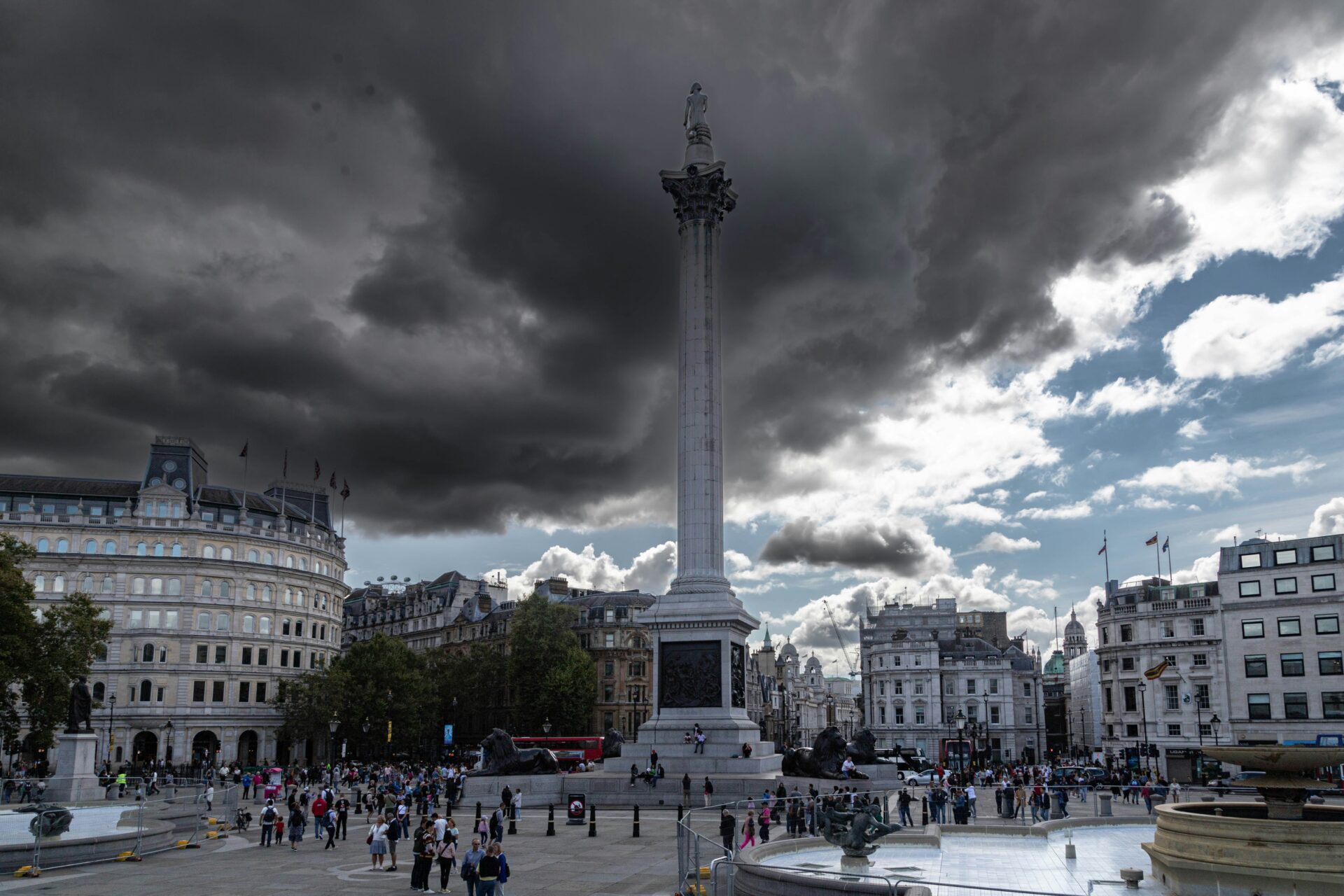
A Closer Look at the Famous Bronze Lions
At the foot of the column, four massive bronze lions stand guard. Sir Edwin Landseer designed them, and each one seems to have its own personality, almost as if it might move at any second.
I love checking out the details—Landseer used a real lion corpse as reference, but honestly, their paws look a bit like a housecat’s.
The lions impress even up close, with their engraved textures catching the London light. Kids love climbing on them, though I’m careful—their surfaces get slippery, polished by years of hands and shoes.
Sometimes I just step back and watch the crowd take selfies, dwarfed by these bronze beasts.
Just for fun: There’s a running joke that, despite caretakers’ best efforts, some bits of the lions always end up with London’s famous pigeon droppings. I can’t unsee that now.
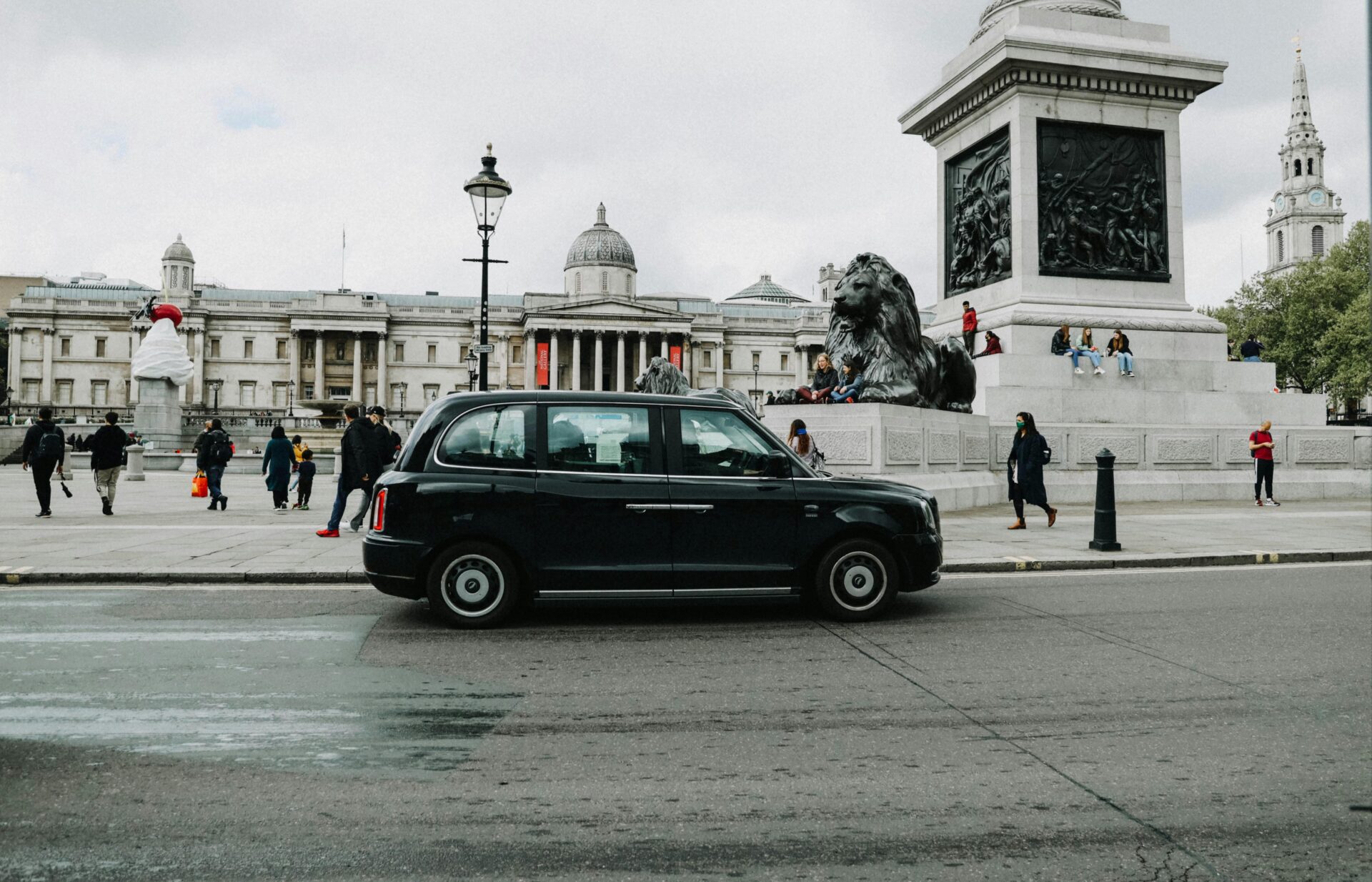
Eccentricities and Etiquette Among Tourists
Nothing really prepares you for the wild mix of tourists here. I’ve seen people show up in costumes, blowing bubbles, posing seriously one minute and cracking up the next.
Some folks try to climb the lions for that perfect photo, even though it’s kind of frowned upon. Polite etiquette says it’s better to pose beside the sculptures, not on top of them.
Street artists sometimes sketch the column or the lions, and I once chatted with a visitor who swore that touching a lion’s paw brings good luck. There’s no official rule against it, but a little respect never hurts.
Here’s a quick do’s and don’ts table I’ve picked up:
| Do | Don’t |
|---|---|
| Take photos | Climb on the lions |
| Respect the statues | Leave litter or feed pigeons |
| Listen to storytellers | Shout or disrupt others |
Trafalgar Square etiquette isn’t about strict rules. It’s more about sharing space and history with a bit of courtesy—and a dash of that eccentric London charm.
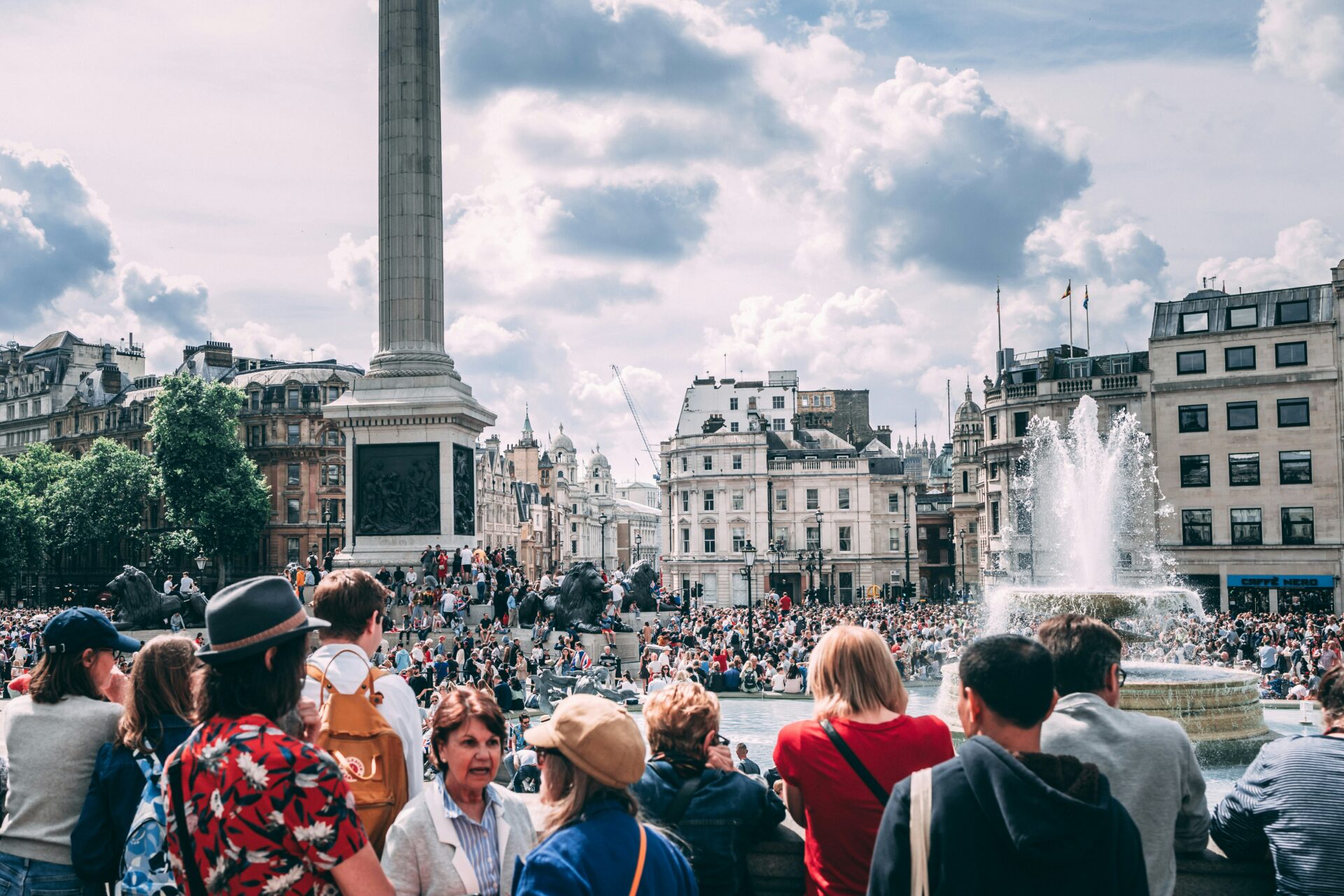
Pigeons of the Past and Present
Trafalgar Square’s pigeons are nearly as famous as the lions and grand buildings. Their story has changed a lot, both for the birds and for visitors who now see the square differently.
A Changing Habitat: Fewer Birds, New Stories
Decades ago, thousands of pigeons packed Trafalgar Square. People would buy seed near Nelson’s Column and end up with birds perched on their arms, heads, even shoulders.
That scene is mostly gone now. Officials banned feeding pigeons years ago to keep the square cleaner and healthier for everyone, and the seed sellers disappeared.
Now, not only are there fewer pigeons, but the whole place feels more open and less crowded. The square feels calmer these days.
Pigeons still show up, darting around and swooping in near the fountains or statues, but the vibe is different. Nature still has a place here, but it’s a new balance—urban life and wildlife figuring things out together.
I pressed my hand to the chilly rail near the lions and wondered if the city’s changes have shifted how people see the place. Fewer pigeons mean cleaner steps and better air, but also a sense that the “old days” are fading into memory.

Capturing the Moment: Nature and People Interact
During my visit, families paused at the edge of the square, laughing and pointing as a few bold pigeons strutted by. People snapped photos.
Kids tried to sneak up for a picture-perfect moment. Here’s what stood out most:
- Pigeons diving for crumbs near the fountains
- Artists sketching the column, sometimes with a pigeon or two as surprise models
- Tourists juggling phones, trying to fit birds and lions into one frame
Even with fewer pigeons, their presence still connects people to nature right in the city center. There’s this feeling of sharing space, even if it’s just for a moment.
The pigeons—still part of London’s living memory—help create those little stories that travelers bring home.
So, if you visit, keep your camera ready. The birds don’t gather in huge flocks now, but their subtle charm makes you slow down and pay attention. That’s part of why Trafalgar Square always feels alive.
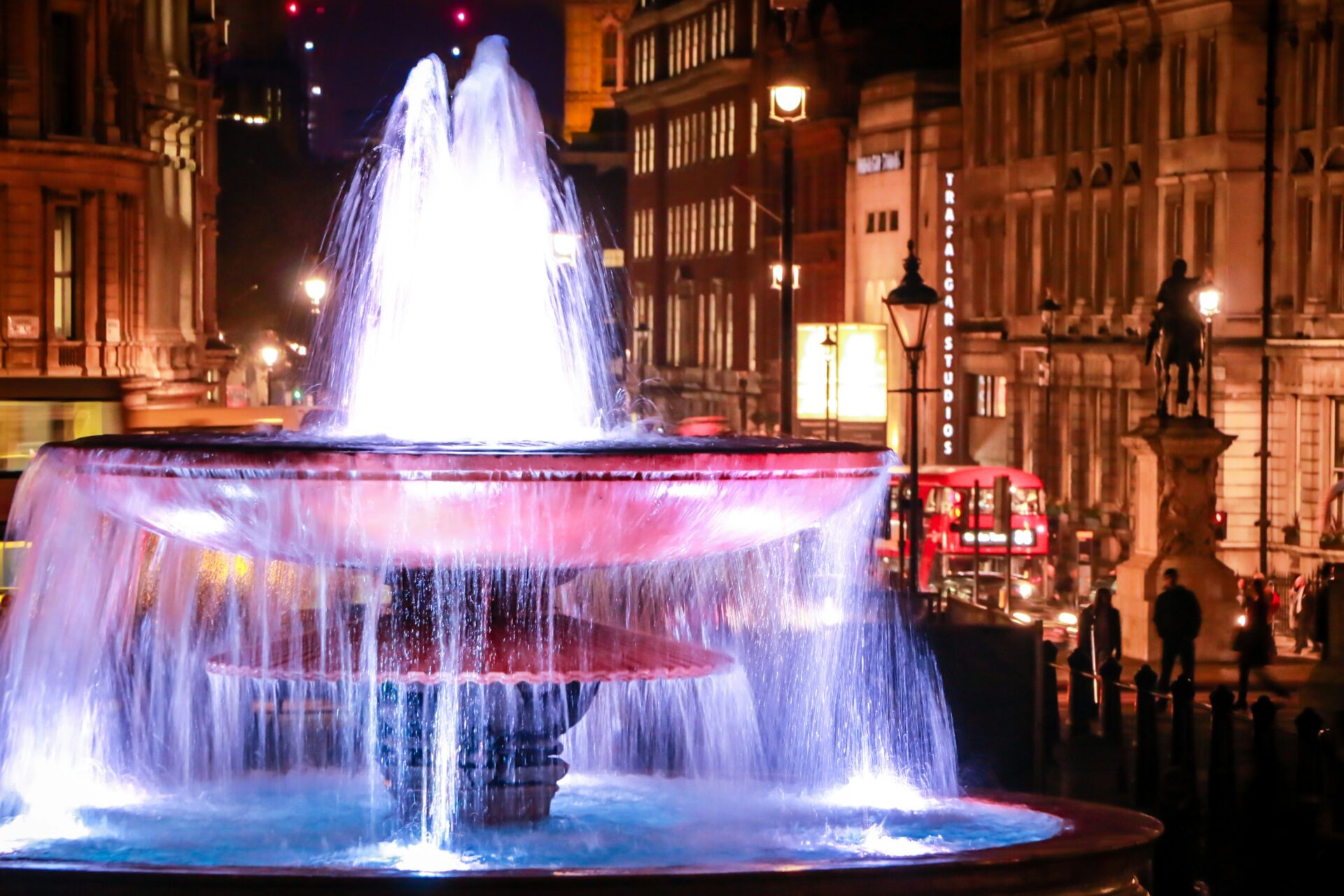
The Grandeur of the National Gallery
Tucked on the north side of Trafalgar Square, the National Gallery draws millions with its world-famous art, cozy corners, and impressive facade.
This place isn’t just a museum; it’s where history, creativity, and inspiration all meet under one gorgeous roof.
Timeless Art and Literary Connections
Walking through the National Gallery, I feel this odd connection to the artists—and even the writers—who’ve wandered these halls for almost two centuries. The collection covers everything from medieval altarpieces to wild Impressionist scenes.
Some paintings here have sparked essays, poems, even whole novels. I once saw a school group reading Keats aloud in front of Turner’s wild skies—a real-life mashup of art and literature.
Writers like Virginia Woolf and John Ruskin wrote about paintings here. The Gallery doesn’t just show art; it invites visitors to react, sparking new ideas like a good book does.
American writers, too, have their stories of coming to London and reflecting on these masterpieces, mixing in their feelings about modern life.
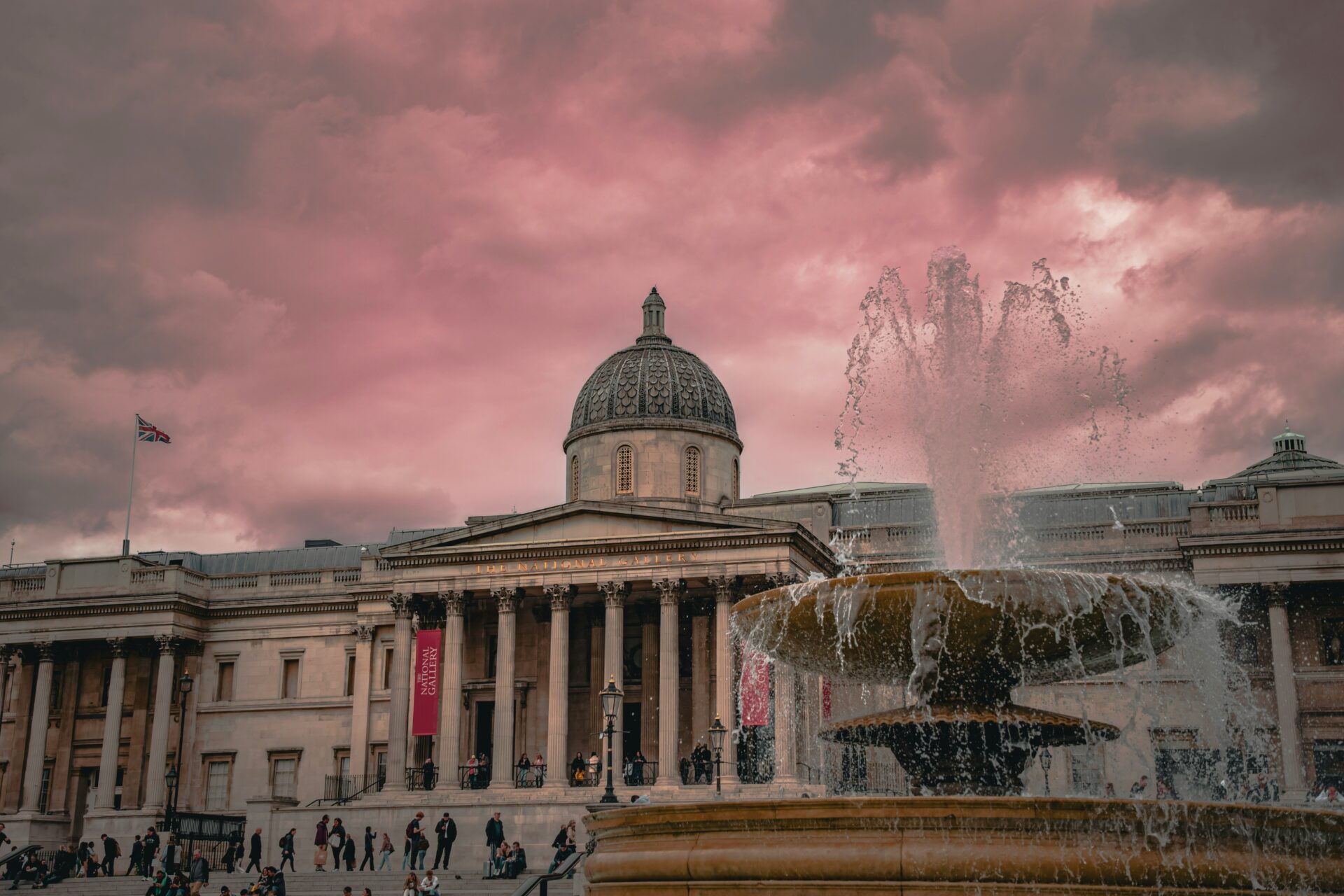
Light, Darkness, and the Emotions in Masterpieces
The light inside the Gallery matters as much as the art. Every room shifts from shadowy corners full of mystery to spaces flooded with sunlight.
I often stand quietly, just watching how the light glimmers on a Rembrandt or dances on Monet’s ponds. The changing light makes every viewing personal.
Paintings seem to shift in mood and meaning depending on the time of day or the weather outside. Some works, like Caravaggio’s intense scenes, use darkness to mirror our own emotions—drama, fear, awe.
People around me react in their own ways—smiles, frowns, thoughtful pauses. Art here is never static; it’s a living mirror for whatever we’re feeling.
Sometimes I scribble quick notes in my notebook, just trying to catch what a painting stirs up inside.
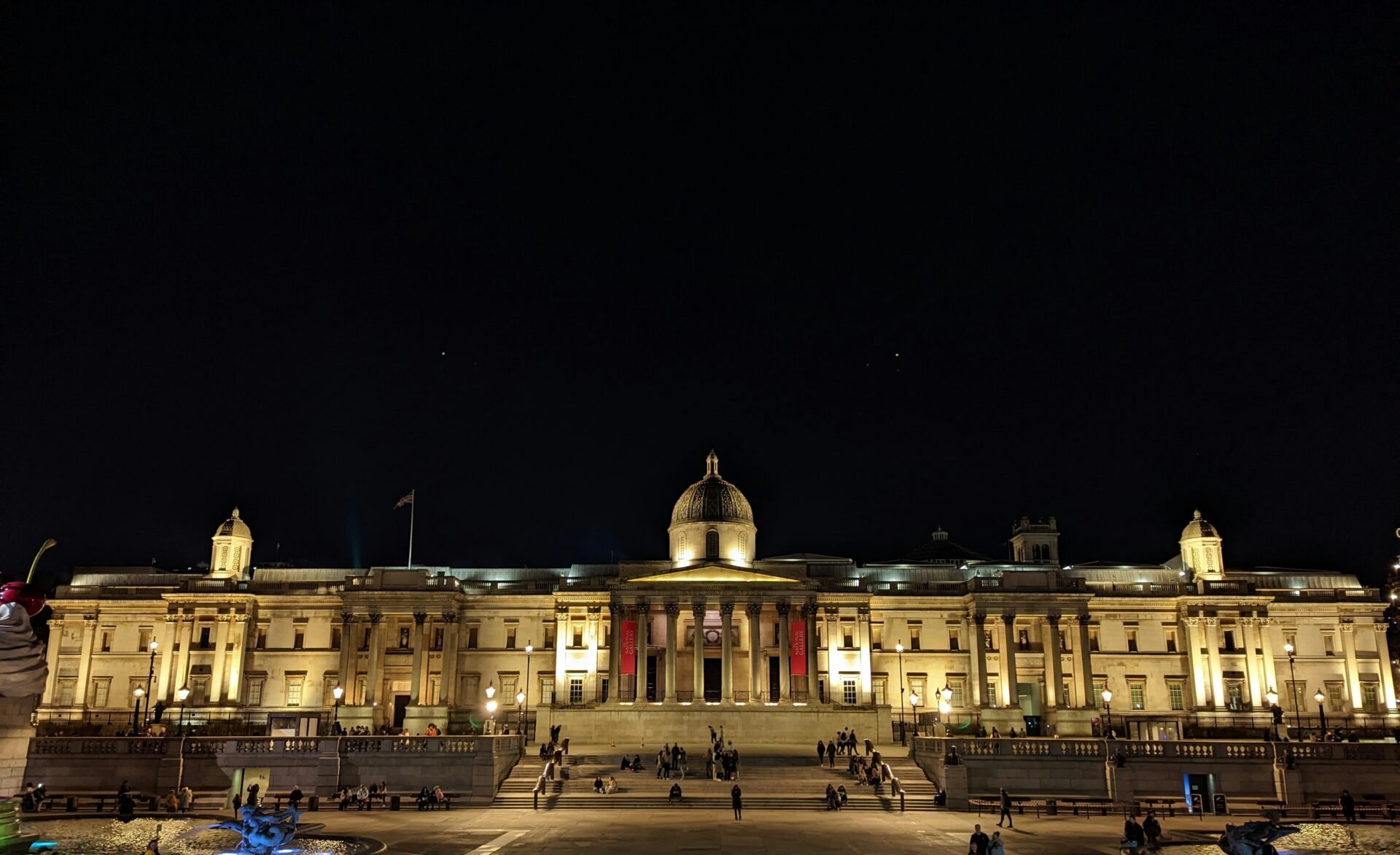
Practical Tips for Visiting the Gallery
If you want the quietest galleries and the best views, I’d say arrive close to the 10 am opening. Admission is free, but donations help keep the place running.
You can grab a free map at the entrance—definitely do that if you want to plan your route. The Gallery’s website lists special exhibitions and events, including free guided tours.
Benches are everywhere, perfect for sitting, sketching, or just soaking up the vibe. I always bring a notebook or use my phone to jot down thoughts, painting names, or little sparks of inspiration.
Photography without flash is fine in most rooms, which is great if you want to remember a detail or how the light hit a painting. Don’t skip the bookshop—it’s a goldmine for anyone who loves art, literature, or quirky souvenirs.

Exploring Nearby Icons and Hidden Gems
Wandering just beyond Trafalgar Square, I found some of London’s most memorable sites. I passed through centuries-old streets and stumbled on a mix of landmarks, forgotten corners, and stories carved into the city itself.
Westminster Abbey and the Tower: Living History
When I stood outside Westminster Abbey, it felt like history pressed in from every side. Kings and queens have walked these paths for nearly a thousand years.
Inside, soft light slants across tombs of poets, scientists, and royals. It’s one of those places where British history feels alive—almost like it’s still unfolding.
The Tower of London looms beside the Thames, its walls heavy with stories. I looked up at the White Tower and tried to picture prisoners, royal jewels, and old armor hidden away behind those thick stones.
As I wandered the battlements, I stumbled onto legends—ravens guarding the kingdom, royal executions, secret messages scratched into icy walls. Every step here ties you to wild, dramatic moments from England’s past.
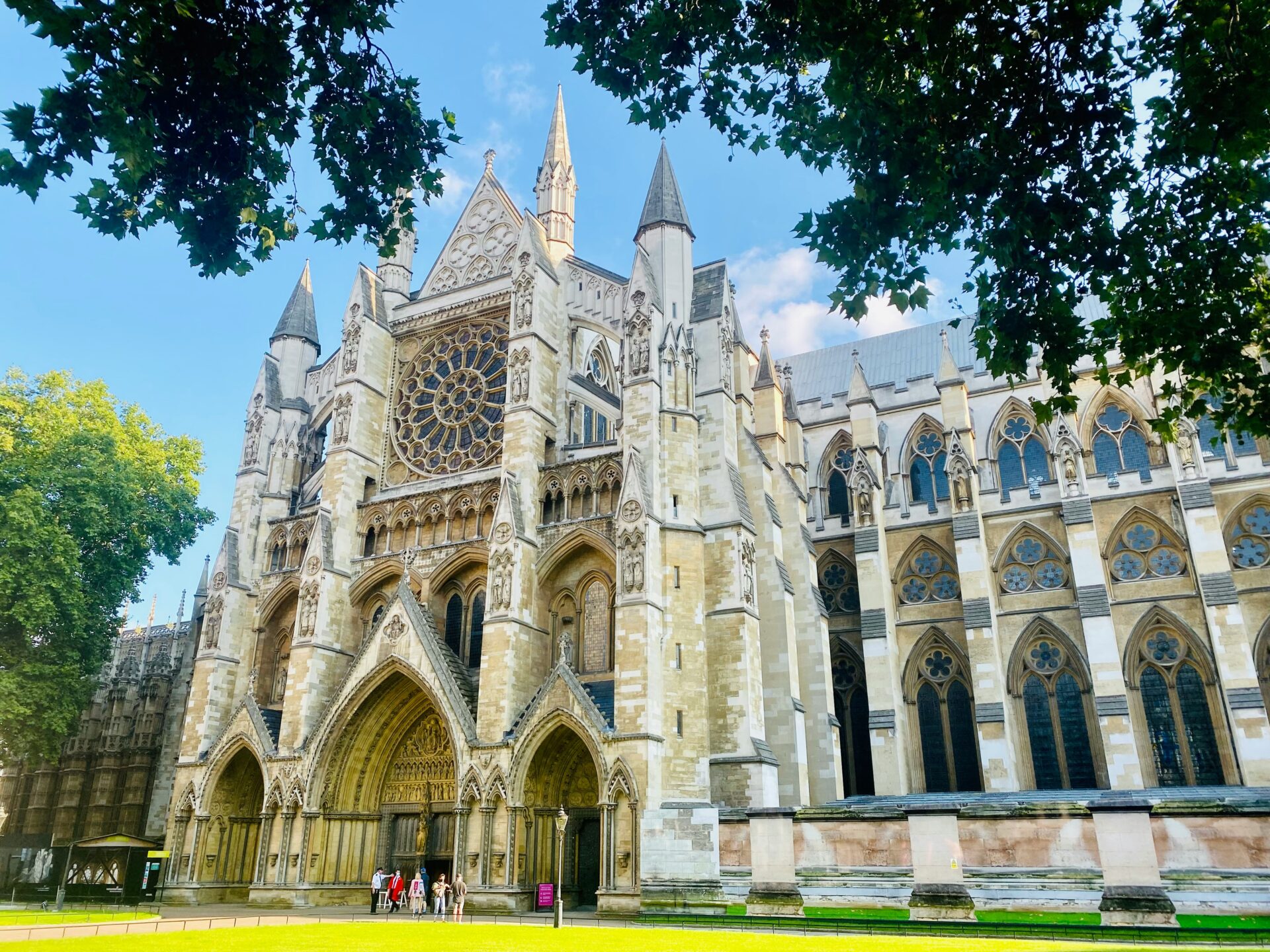
Fleet Street, Guildhall, and Cheapside: Echoes of the Past
I wandered down Fleet Street, which once buzzed as the heart of London’s newspaper world. Old signs above doorways and tight alleys hint at journalists chasing stories through the night.
Pubs and coffee houses along the way sparked wild rumors and great tales—think of Daniel Defoe, creator of Robinson Crusoe, maybe plotting his next story over a pint.
Not far away, Guildhall rises up—the seat of London’s city government since the Middle Ages. Its Gothic halls have witnessed trials, celebrations, and council meetings for centuries.
Sometimes they let you peek inside, and you might spot ancient documents or rare records that reveal slices of London’s past.
Cheapside led me through busy shops and market streets with roots deep in medieval times. I followed the old traders’ path and realized London’s energy still pulses through these markets, even if they’ve changed a lot over the years.

London Bridge and Newgate: Myths and Antiquities
When I look toward London Bridge, I can’t help but picture all the layers of myth and fact beneath my feet. Earlier bridges here bustled with shops and houses, jammed together in a way that feels almost impossible now.
It’s one of those places where the real and the legendary London just blur together. Travelers from Dublin would pass through, or maybe someone would just stumble in, chasing some new adventure.
Close by, I found what’s left of Newgate—London’s old, notorious prison. Barely any stones remain, but the stories? They stick around.
People still talk about wild escapes and those packed, grimy cells. Sometimes, when crews dig up the street, they find odd old artifacts.
My mind drifts to all the lost and found treasures, and the weird local legends that make these streets buzz with their own kind of life.
| Site | What It’s Known For | Special Notes |
|---|---|---|
| Westminster Abbey | Royal coronations and burials | Stunning Gothic architecture |
| The Tower | The Crown Jewels, royal history | Home to the famous Tower ravens |
| Fleet Street | Old newspaper district | Linked to Robinson Crusoe and printing |
| Guildhall | Historic city meetings | Ancient documents and city artifacts |
| Cheapside | Medieval market street | Busy shops, echoes of historic trade |
| London Bridge | Myths and crossing point | Once crowded with homes and stories |
| Newgate | Site of former prison | Tales of old crimes and found objects |

